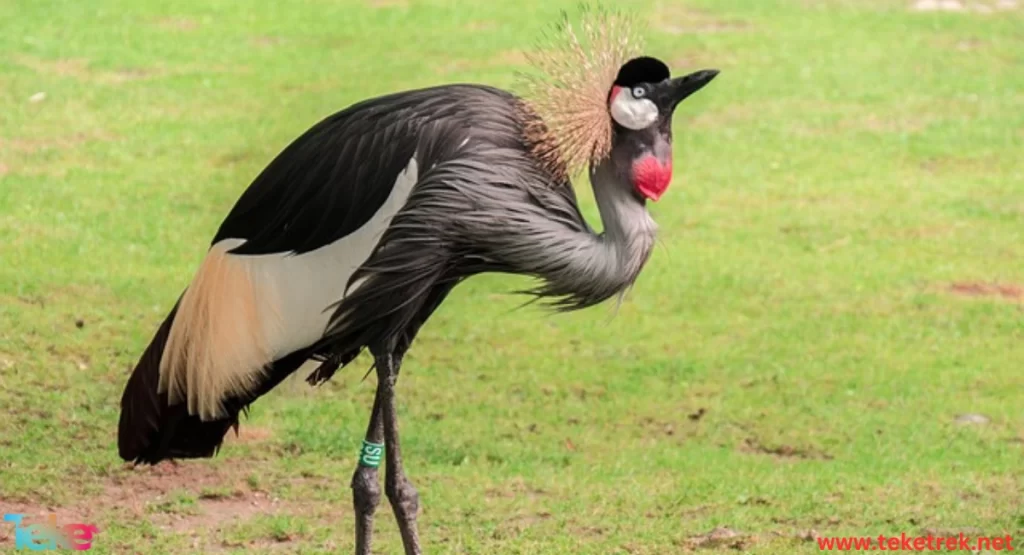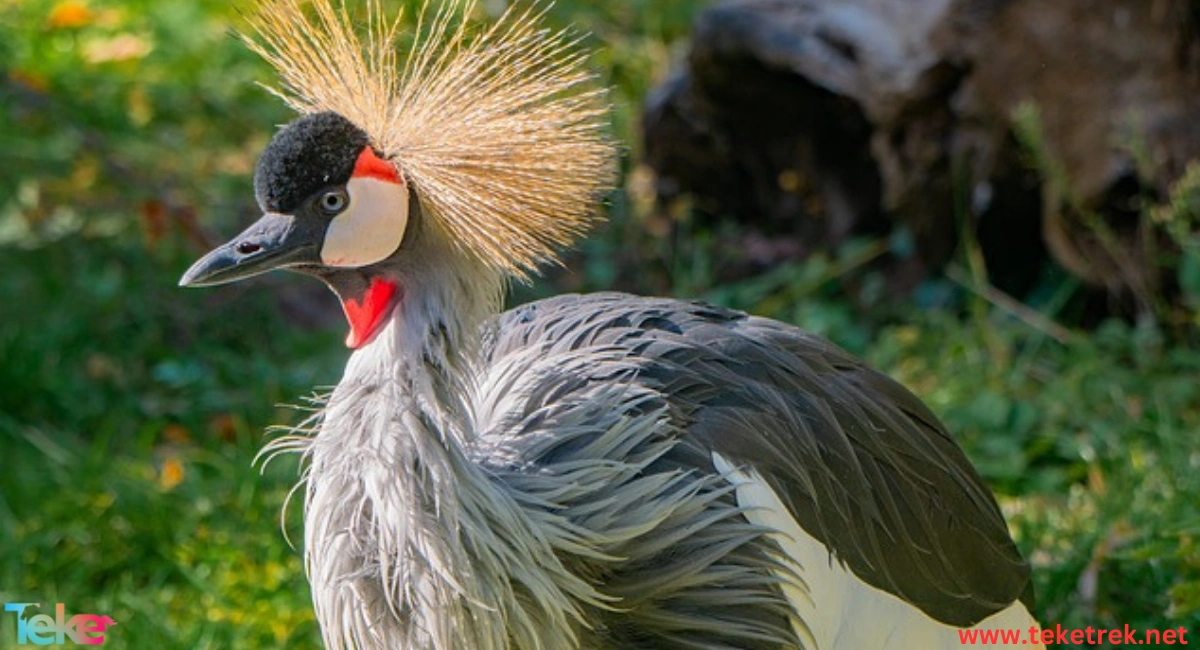The crane is considered the largest bird in the world. We will take a look below at its lifestyle, food, and reproduction.
In this Article about crane in TekeTrek Website, we will introduce you to the most important information related to this object. Follow along with us.

About the crane
- The crane is an animal belonging to the family of long wading birds of the Gruidae family, order Gruiformes. It has a slightly bare head and a heavy beak, similar to a heron but larger. Its color changes when the bird is excited. When it flies, its long neck extends forward and its legs extend forward Back.
- Its size ranges according to its type, from the Demoiselle crane, which is 90 cm long, to the Sarus, which is 176 cm long, while the Red-crowned crane weighs 12 kg and is the heaviest. The average lifespan ranges between 20 to 25 years.
Diet of the crane
The crane is a carnivorous animal that eats various types of plants, reptiles, small mammals and other birds.
Crane habitats
They lived in forests and left only a few fossil records. The oldest crane fossils have been discovered in Eocene deposits in North America. While live birds live everywhere except Antarctica and South America.
Reproduction in cranes
- Cranes nest in swampy areas and lay two eggs at a time. They dance special dances when mating, which include fast stepping, high jumps, stretching, and bending.
- Crane chicks grow very quickly, with their feathers growing at two to four months of age.
Lifestyle
The crane is a social bird that lives in large communities. It is able to defend itself well, as it clicks, kicks, and strikes opponents with its wings.
Types of cranes
There are several types of cranes that differ from each other in terms of size. The most prominent types of cranes are:
Whooping crane (Grus americana)
- The whooping crane is a species of agile wild bird that roams swamps and plains, feeding on small animals, grain sprouts, and grass. It builds a nest made of grasses and grass stems on dry ground in swamps or fields and uses it year after year. It lays two olive-gray eggs spotted with brown.
- The little brown chicks run soon after hatching and have a simple windpipe that quickly lengthens with age, curling in on itself like a French horn. It is buried in the hollow keel of the breastbone and is approximately 1.5 m long in an adult crane (Grus americana).


Sandhill crane (Grus canadensis)
The sand crane ranges in length from 90 to 110 cm, has a red crown, a bluish-gray or brown body tinged with sandy yellow, and a long, harsh, piercing call.
- It breeds from Alaska to Hudson Bay and was previously bred in south-central Canada and the Great Lakes region of the United States but is rare there today.
- There is a species called the Florida sandhill crane (G. c. pratensis), which is small and non-migratory and breeds in Florida and southern Georgia. The subspecies is classified as endangered.
- G. grus breeds in Europe and northern Asia and spends the winter in large flocks in northern Africa, India and China.
- The Australian native companion, or brolga (G. rubicunda), lives in Australia and southern New Guinea.
- While Anthropoides virgo breeds in Algeria, southeastern Europe, and Central Asia.
- (Balearica pavonina [regulorum]) is found over Africa, while (Bugeranus carunculatus) is found in eastern and southern Africa.
Cranes and extinction
The crane is considered an endangered species due to hunting and habitat destruction but is protected under an international agreement.
FAQ
Among the most common questions about the crane:
- What does a crane eat?
The crane is a carnivorous animal that feeds on small animals
- What does the crane symbolize?
The crane symbolizes good luck.
In short, the crane is a large, endangered carnivorous wading bird, with several species: sandpiper, whooping, and whooping, differing from each other in size.






